A Closer Look at the Meaning Behind Sotho Traditional Attire
A Closer Look at the Meaning Behind Sotho Traditional Attire
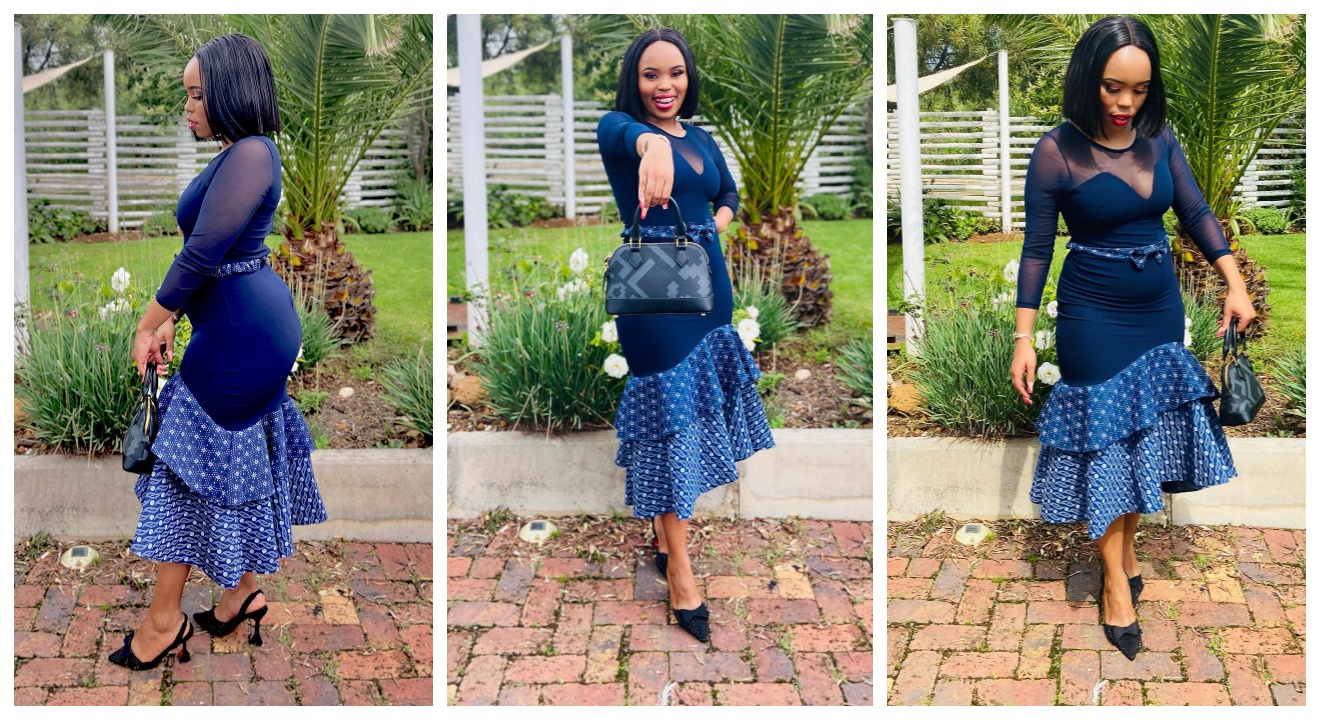
Introduction
Sotho traditional attire is not just a form of clothing; it holds deep cultural and historical significance. This article takes a closer look at the meaning behind Sotho traditional attire and why it is still cherished and embraced today.
Introduction to Sotho Traditional Attire and its Significance
Sotho traditional attire is a symbol of pride, heritage, and identity for the Basotho people of Lesotho and South Africa. The attire encompasses vibrant colors, intricate patterns, and unique designs that reflect the rich culture and traditions of the Sotho community.
Each piece of clothing worn by the Basotho has its own meaning. For example, the famous blanket called “Seanamarena” represents wealth, status, and protection from the harsh climate. The designs on the blankets also tell stories and convey messages about social status, clan affiliation, or marital status.
Wearing Sotho traditional attire is a way for the Basotho people to express their cultural values, unity, and pride. It serves as a visual representation of their shared heritage while honoring their ancestors’ traditions.
In addition to its cultural importance, Sotho traditional attire has gained recognition in the fashion world for its bold colors, intricate beadwork, and unique silhouette. It has been showcased on runways across the globe, merging traditional craftsmanship with contemporary fashion trends.
By preserving and embracing Sotho traditional attire, the Basotho people ensure that their cultural heritage continues to thrive and remain relevant in modern times. It serves as a constant reminder of their roots, a source of inspiration, and a way to connect with their community.
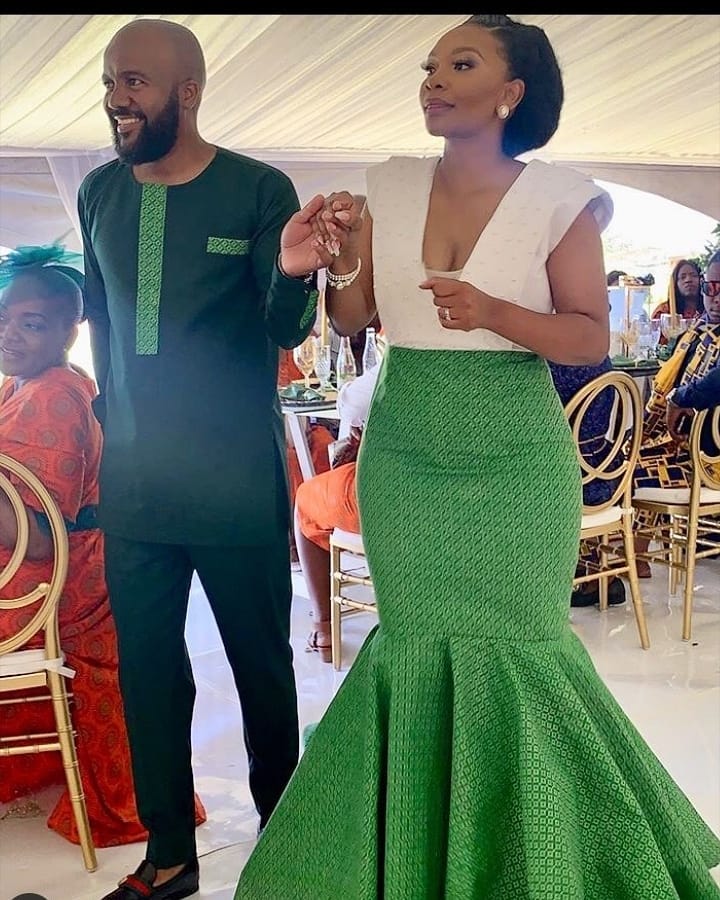

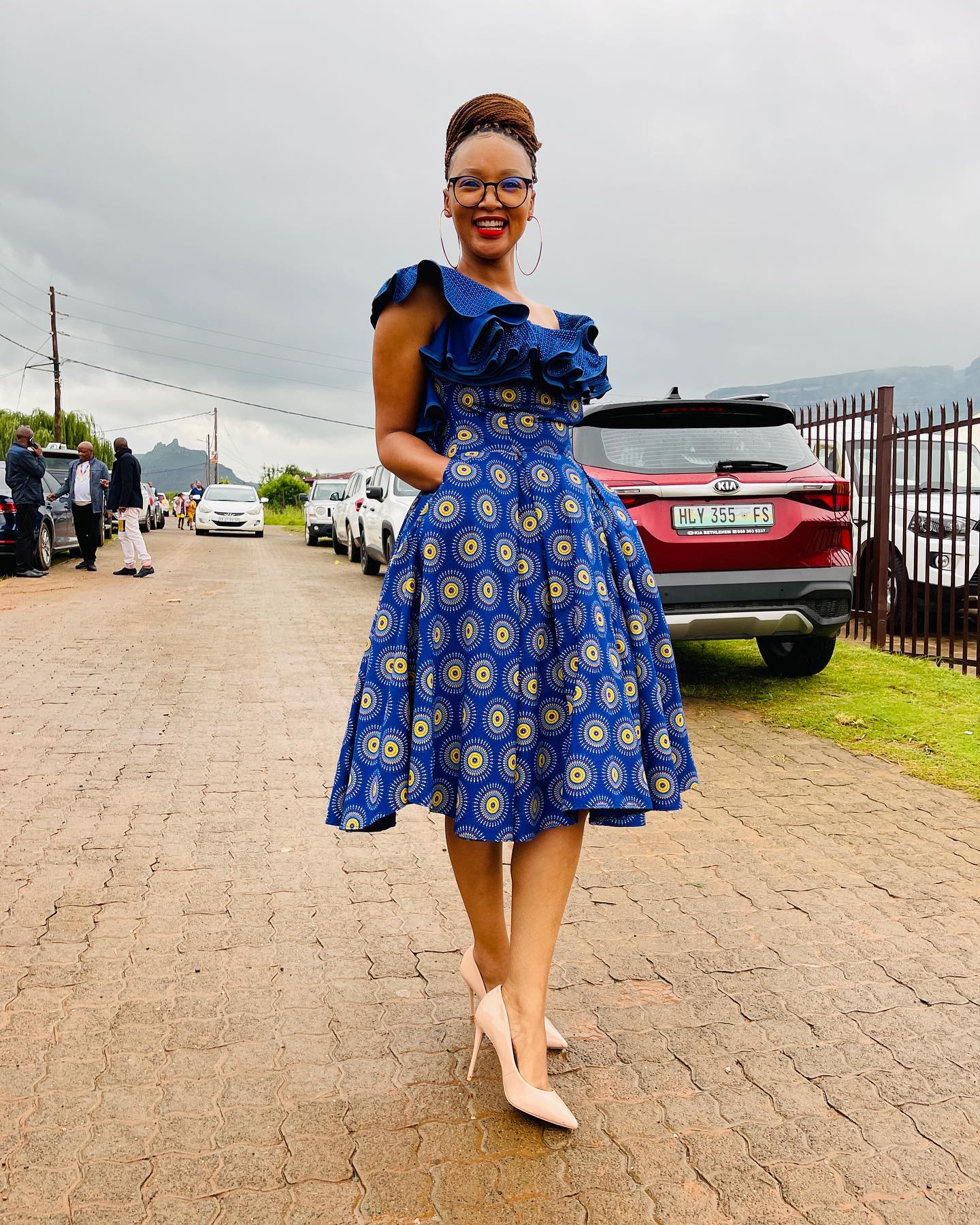
History of Sotho Traditional Attire
The Sotho people, a Bantu ethnic group in Southern Africa, have a rich cultural heritage that is beautifully expressed through their traditional attire. These garments are not only visually stunning but also hold significant meaning and symbolism within the community.
Origins and evolution of Sotho Traditional Attire
For centuries, the Sotho people have crafted their clothing using natural materials like animal skins, cotton, and grass. The design of the garments reflects their traditional beliefs, societal roles, and even the climate of their region.
The traditional attire for men often consists of a dark blanket-like garment called a “khiba” or “karos” draped over the shoulder. This piece symbolizes masculinity, protection, and honor. Women, on the other hand, wear a vibrant and intricately decorated garment called a “seshoeshoe” or “dintlha.” These dresses are adorned with bold patterns and colors that represent femininity, beauty, and cultural pride.
As time has progressed, Sotho traditional attire has evolved to incorporate modern influences without losing its essence. Today, you can find Sotho-inspired clothing designs on runways and in fashion boutiques worldwide. This showcases the growing appreciation for the beauty and significance of Sotho traditional attire beyond its original cultural context.
The meaning behind Sotho traditional attire goes beyond mere aesthetics. It is a way for the Sotho people to connect with their heritage, express their individuality, and proudly share their culture with the world. By preserving and celebrating these traditions, they ensure that their identity remains strong for generations to come.
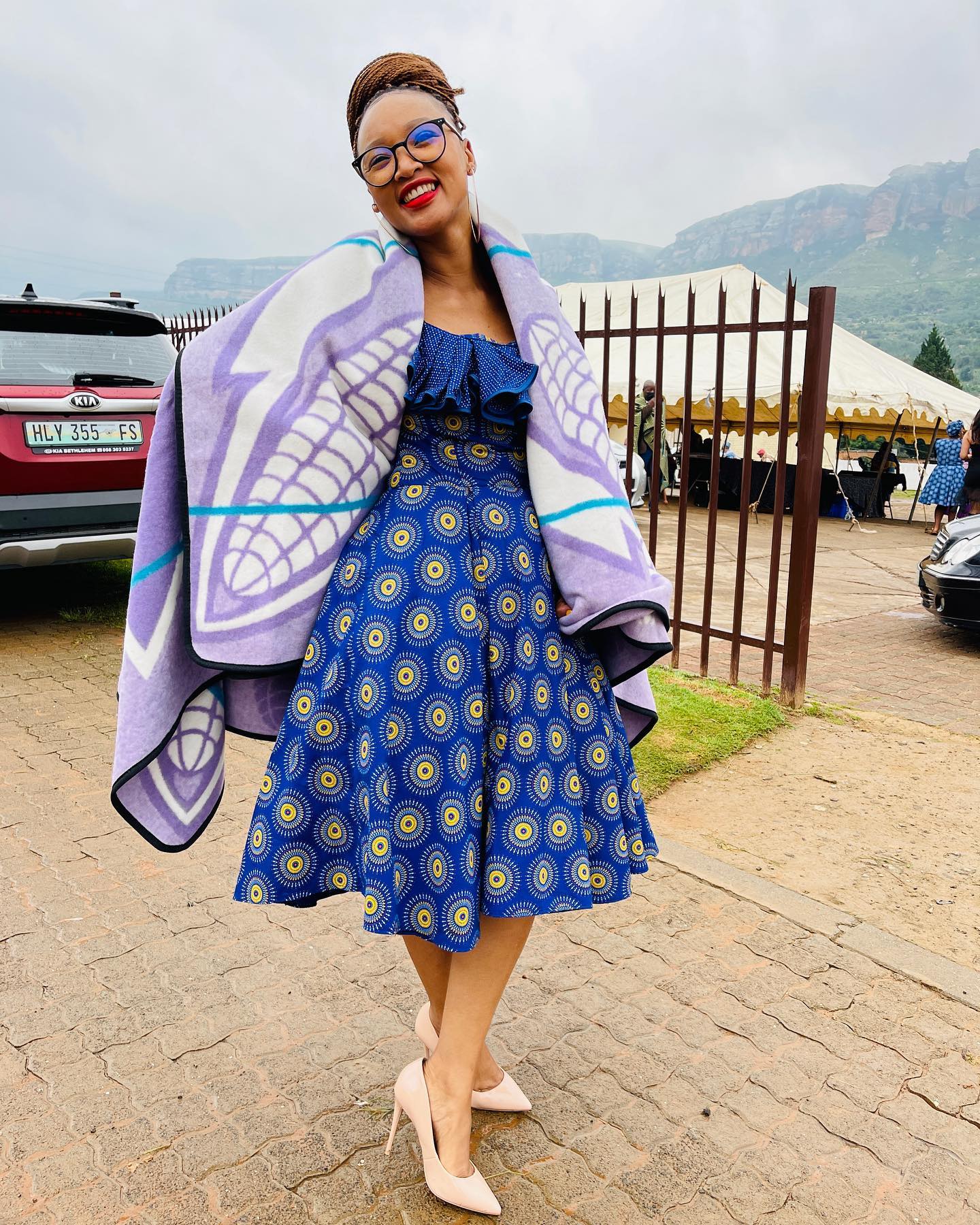

Different Styles of Sotho Traditional Attire
Overview of different styles and variations of Sotho Traditional Attire
Sotho traditional attire is a vibrant and significant part of the Sotho culture, reflecting their rich heritage and history. The attire is characterized by its bold colors, intricate designs, and unique fabrics.
One style of Sotho traditional attire is the Lesotho blanket, which is worn as a shawl or wrapped around the body. The blanket holds symbolic meaning and is often used to display wealth or social status. Another style is the Seshoeshoe fabric, which features intricate geometric patterns and is commonly worn as dresses, skirts, and head wraps.
In addition to these styles, there are variations within the Sotho traditional attire depending on the occasion or event. For weddings, men often wear a formal outfit known as the “suitswane,” which consists of a long-sleeved shirt, pants, a vest, and a matching hat. Women usually wear the “tseliso,” a dress with a colorful head wrap.
For cultural festivals or celebrations, both men and women wear traditional attire adorned with beads, feathers, or other embellishments. These outfits showcase the artistry and craftsmanship of the Sotho people.
Overall, Sotho traditional attire plays a vital role in preserving the cultural identity and heritage of the Sotho people. It represents their values, traditions, and sense of belonging in their community. Wearing these garments not only allows individuals to express their pride but also serves as a visual connection to their ancestors and their roots.
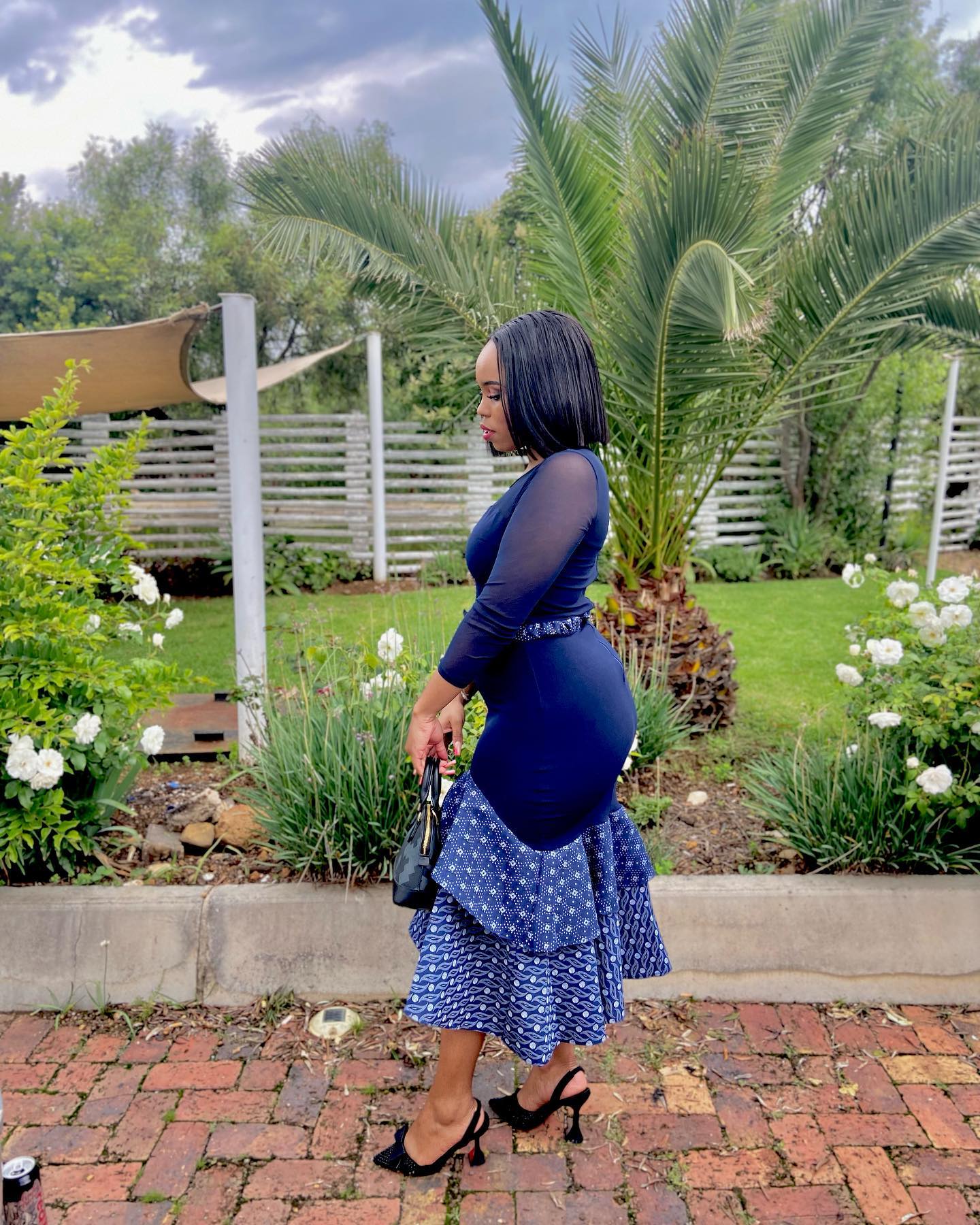
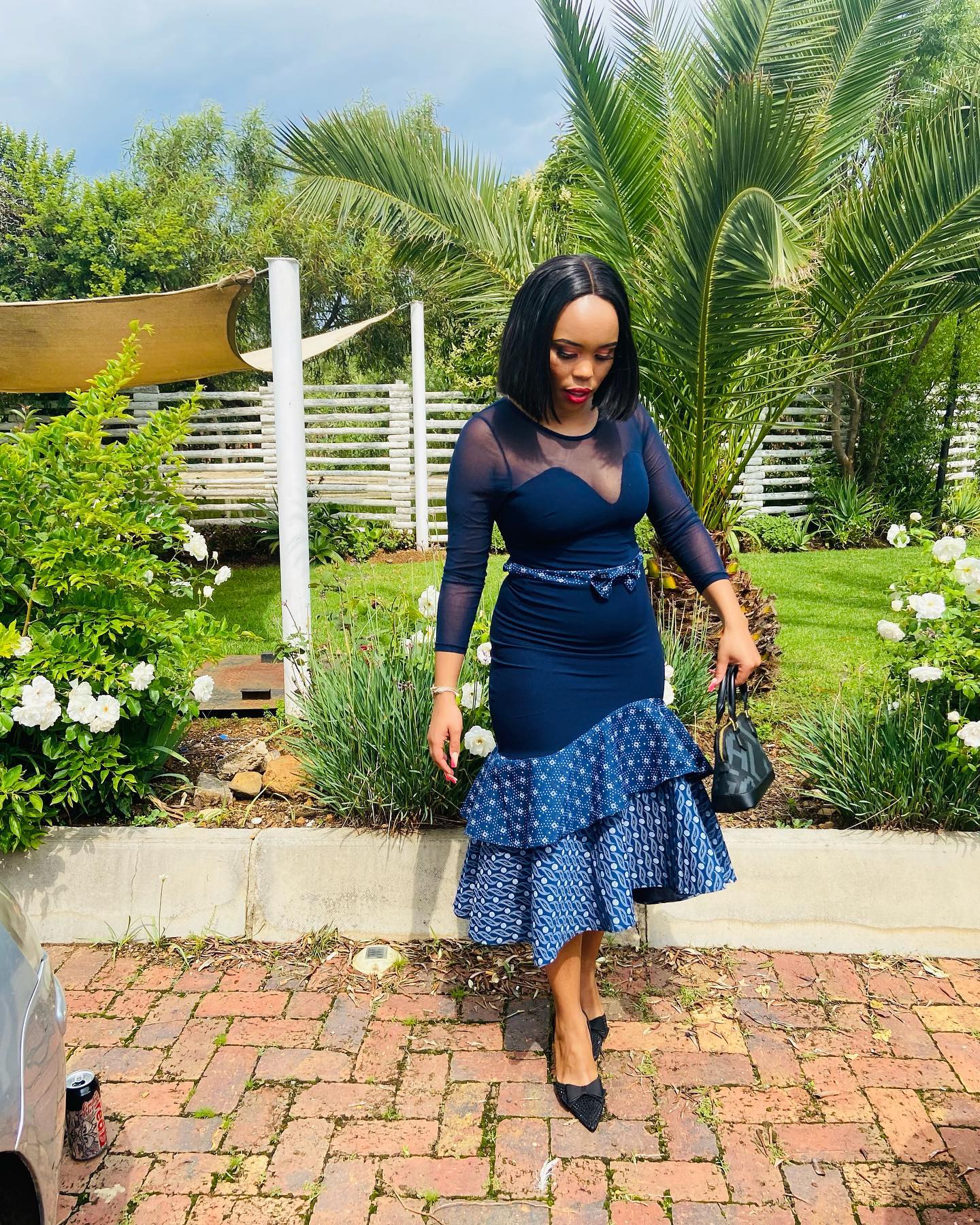

Materials and Colors Used in Sotho Traditional Attire
Sotho traditional attire is a fascinating representation of culture and identity. The materials and colors used in these garments hold special significance and reflect the rich history of the Sotho people.
Common materials and colors used in Sotho Traditional Attire and their symbolism
The Sotho people often use natural materials like wool, cotton, and leather in their traditional attire. These materials not only showcase their connection to the land but also represent durability and authenticity.
Colors play a vital role in Sotho traditional attire, conveying different meanings and messages. Some common colors used include:
- Red: Symbolizing love, bravery, and power, red is often used in ceremonial attire to represent vitality and strength.
- Blue: Representing purity, harmony, and spirituality, blue is frequently incorporated into traditional clothing for its calming effect and association with the sky and water.
- White: White symbolizes purity, peace, and spirituality. It is often used in wedding attire to signify new beginnings and a fresh start.
- Yellow: Associated with happiness, joy, and fertility, yellow is used to bring positivity and energy to traditional garments.
- Black: Black embodies power, authority, and wisdom. It is commonly used in formal occasions to signify respect and tradition.
The combination of these colors and materials creates a visual language that tells the story of the Sotho people’s heritage and values.
Sotho traditional attire showcases the significance of cultural preservation through its choice of materials and colors. Each garment reflects the pride, traditions, and deep-rooted beliefs of the Sotho community.


Accessories and Adornments in Sotho Traditional Attire
When it comes to Sotho traditional attire, accessories, and adornments play a significant role in enhancing the overall look. These elements not only add cultural significance but also reflect the rich heritage and customs of the Sotho people.
Traditional accessories and adornments that complement Sotho Traditional Attire
- Blankets: Blankets are an integral part of Sotho traditional attire, with various patterns and designs that hold symbolic meaning. They are worn over the shoulders, representing warmth, protection, and heritage.
- Hats: Hats are commonly worn by both men and women, adding a touch of elegance to their outfits. These hats come in different styles and materials, such as straw or fabric, and are often decorated with colorful beads or feathers.
- Jewelry: Jewelry is an essential component of Sotho traditional attire, with an array of necklaces, bracelets, and earrings made from beads or metals like copper or brass. These accessories not only enhance the beauty but also serve as status symbols within the community.
- Pinafores: Pinafores are worn by Sotho women as a decorative apron-style garment. Made from vibrant fabrics adorned with intricate embroidery or beadwork, they add a pop of color and cultural significance to the overall outfit.
- Shawls: Shawls are used as versatile accessories in Sotho traditional attire. They can be draped over the shoulders or worn around the waist, depending on the occasion and personal preference. Shawls often feature unique patterns or motifs that represent Sotho traditions.
These accessories and adornments not only enhance the visual appeal of Sotho traditional attire but also serve as a way to connect with their cultural roots. They represent a rich heritage and symbolize the pride and identity of the Sotho people.


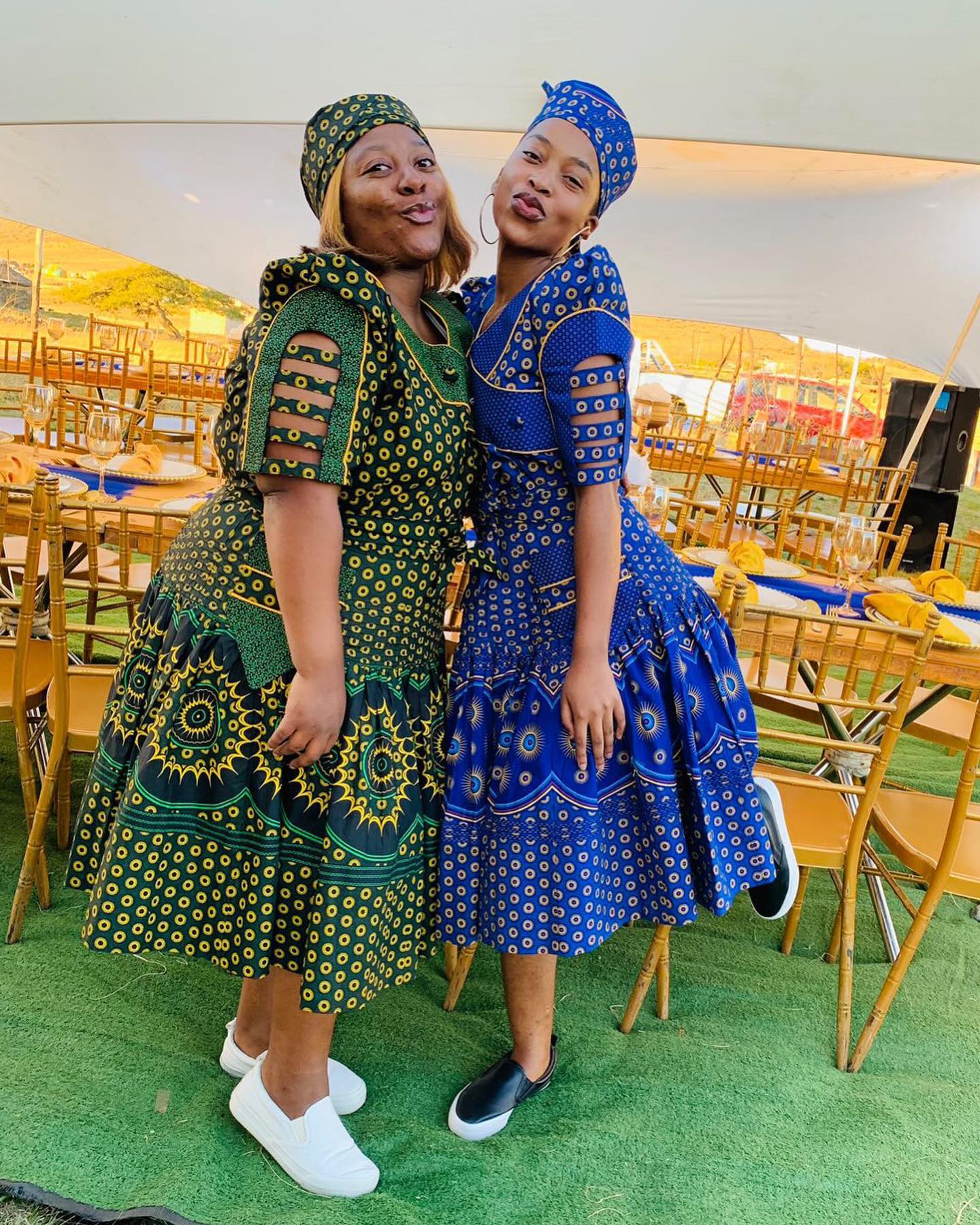
Occasions and Events for Sotho Traditional Attire
Sotho Traditional Attire holds great cultural significance for the Sotho people, and it is worn on various traditional events and occasions throughout the year. These events provide a platform for the Sotho community to showcase their rich heritage and traditions.
Traditional events and occasions where Sotho Traditional Attire is worn
- Weddings: Sotho weddings are vibrant affairs filled with colorful attire. Both the bride and groom, as well as the wedding party, adorn themselves in traditional outfits to celebrate their union.
- Festivals: Sotho festivals, such as the Morija Arts and Cultural Festival, are perfect occasions to showcase Sotho Traditional Attire. The community comes together to celebrate their arts, culture, and heritage while proudly donning their traditional outfits.
- Cultural Gatherings: Sotho Traditional Attire is often worn at cultural gatherings, where members of the community come together to celebrate traditions, share stories, and perform traditional dances.
- Initiation Ceremonies: Sotho initiation ceremonies are important rites of passage for young men and women. During these ceremonies, participants wear traditional attire that symbolizes their transition into adulthood.
- Holidays: On special holidays like Heritage Day or Independence Day, many Sotho people wear their traditional attire to honor their cultural roots.
By wearing Sotho Traditional Attire on these occasions and events, the Sotho people not only celebrate their culture but also proudly carry their traditions forward for future generations.
Modern Interpretations of Sotho Traditional Attire
Sotho traditional attire holds great cultural significance in Lesotho and South Africa. It showcases the rich history, heritage, and identity of the Sotho people. Today, the traditional attire continues to evolve with modern interpretations that blend contemporary fashion trends with traditional elements.
Contemporary adaptations and influences on Sotho Traditional Attire
- Fashion-forward designs: With the influence of the global fashion industry, modern Sotho traditional attire has embraced contemporary cuts, fabrics, and styles. Designers are incorporating vibrant colors, intricate patterns, and innovative silhouettes to create unique pieces that appeal to a wider audience.
- Accessories and embellishments: To add a modern touch to traditional attire, accessories like bold statement jewelry, stylish head wraps, and embellishments are being incorporated. These accessories not only enhance the overall look but also reflect personal style and individuality.
- The blend of cultures: In today’s multicultural society, there is an increased fusion of different cultures. This has influenced the evolution of Sotho traditional attire. Elements from other cultures are now being integrated into traditional designs, resulting in a beautiful blend that represents diversity and inclusivity.
- Adaptation for special occasions: Traditional attire is no longer limited to everyday wear. It has expanded to include formal and festive occasions. Designers are creating elegant dresses, suits, and accessories suitable for weddings, parties, and cultural events.
Sotho traditional attire continues to be an important symbol of identity and pride for the Sotho people. With modern interpretations and contemporary influences, it remains relevant and continues to celebrate the rich cultural heritage of the community in a stylish and inclusive manner.


Cultural Significance of Sotho Traditional Attire
The cultural significance and importance of Sotho Traditional Attire in the community
Sotho traditional attire holds a deep cultural significance within the community. It serves as a representation of identity, heritage, and pride. Each garment is carefully crafted with intricate patterns and vibrant colors, showcasing the rich history and traditions of the Sotho people. The attire is worn during special occasions such as weddings, initiation ceremonies, and cultural festivals, symbolizing unity and connection to their roots. The vibrant fabrics and designs also contribute to the visual aesthetics of the community, creating a sense of uniqueness and admiration. Sotho traditional attire not only celebrates their culture but also serves as a means of passing down traditions from one generation to the next. It plays a vital role in preserving their cultural heritage and instilling a sense of belonging among the community members. Wearing Sotho traditional attire is not simply about fashion; it is a powerful way to honor their ancestors, celebrate their heritage, and showcase their cultural pride to the world.
A Closer Look at the Meaning Behind Sotho Traditional Attire
Sotho traditional attire carries deep cultural significance and is an integral part of the Sotho people’s identity. The attire reflects their customs, beliefs, and way of life. Let’s take a closer look at the meaning behind Sotho traditional attire.
Appreciation and celebration of Sotho Traditional Attire
- Cultural Expression: Sotho traditional attire is a way for individuals to proudly express their cultural heritage. It represents a sense of belonging and identity within the Sotho community.
- Symbolism: Each element of the attire holds symbolic meaning. From the patterns and colors to the style of clothing, each detail conveys a message about personal and communal values, traditions, and history.
- Celebration: Sotho traditional attire is often worn during special occasions, such as weddings, initiation ceremonies, and cultural festivals. It is a way to celebrate and honor their heritage, bringing people together in joyous festivities.
- Pride: Wearing Sotho traditional attire instills a sense of pride among individuals, allowing them to embrace their roots and showcase their unique cultural identity to the world.
- Sustaining Tradition: By continuing to wear and appreciate Sotho traditional attire, the Sotho people ensure that their cultural heritage remains alive and passed down through generations.
FAQ (Frequently Asked Questions)
Q: Can anyone wear Sotho traditional attire?
A: Yes, anyone can appreciate and wear Sotho traditional attire as a way of embracing diversity and celebrating cultural heritage.
Q: Are there specific rules or customs associated with wearing Sotho traditional attire?
A: Yes, there are certain customs and etiquette to follow when wearing Sotho traditional attire. It is important to respect the traditions and significance behind each garment.
Q: Where can I find Sotho traditional attire? A: Sotho traditional attire can be found in specialized stores or through local artisans. Additionally, there are online platforms that offer a wide variety of authentic Sotho clothing options.
Conclusion
Sotho traditional attire represents more than just clothing. It embodies the rich history, values, and customs of the Sotho people. By appreciating and celebrating this cultural treasure, we contribute to the preservation of their heritage and promote cultural diversity.















Comments are closed.